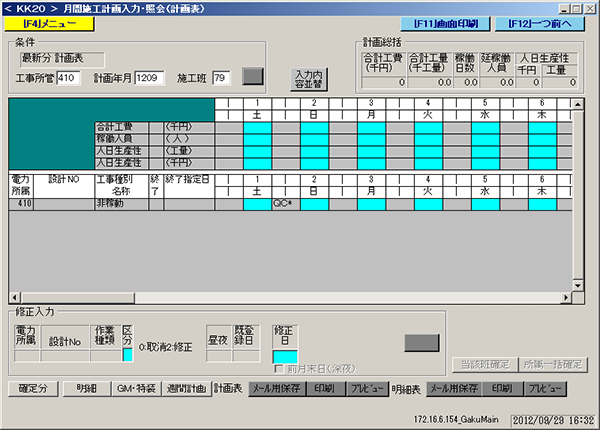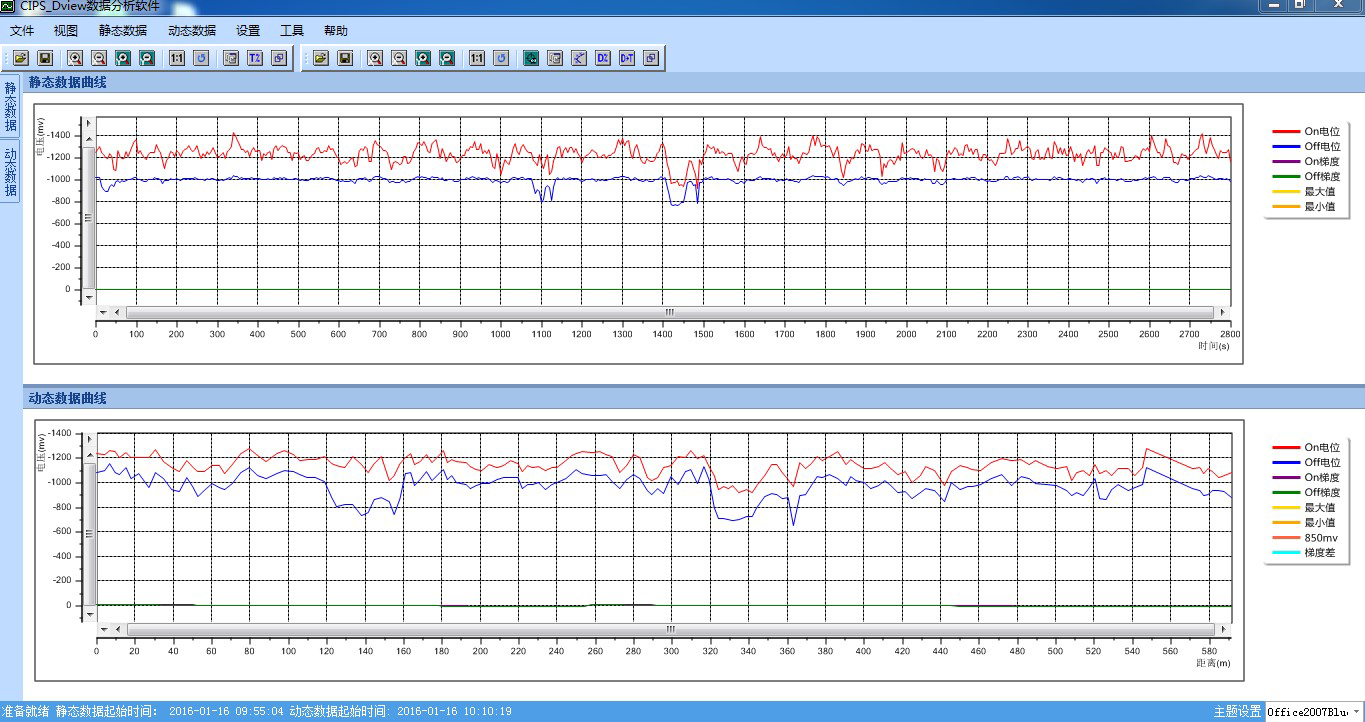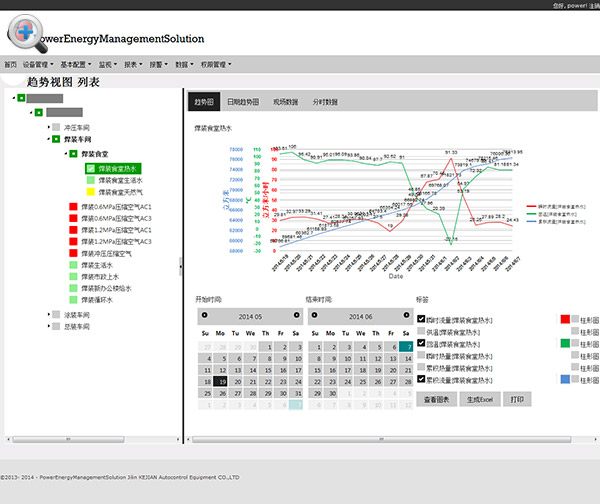在上一篇中,我们介绍了在MVVM模式下使用C1Chart(一)。那么如何在C1Chart动态的添加和删除数据序列。本文就在上一节的基础上,就此内容展开讨论。
如果我们在C1chart的model下有大量的bindings,那么ChartData需要接受一个binding。我们可以简单的设计一个C1ChartData属性,暴露在ViewModel,然后运行时从这个ChartData添加和删除序列。
在下面我们通过实现,让用户更加清楚地了解。
首先,需要在VisualStudio创建一个WPF工程。在Sales类的基础上展示数据。因此我们需要创建这个类。
代码如下:
public class Sales:INotifyPropertyChanged
{
public Sales(string product,double salevalue,double volume,string shipcity,double discount)
{
_product = product;
_salevalue = salevalue;
_volume = volume;
_shipcity = shipcity;
_discount = discount;
_variance = (_volume*1000/_salevalue);
}
#region privateFields
string _product;
double _salevalue;
double _volume;
double _discount;
string _shipcity;
double _variance;
#endregion
#region publicProperties
public string Product
{
get { return _product; }
set { _product = value; }
}
public double SaleValue
{
get { return _salevalue; }
set { _salevalue = value; OnPropertyChanged("SaleValue"); }
}
public double Volume
{
get { return _volume; }
set { _volume = value; OnPropertyChanged("Volume"); }
}
public double Discount
{
get { return _discount; }
set { _discount = value; OnPropertyChanged("Discount"); }
}
public double Variance
{
get { return (this.Volume*1000/ this.SaleValue); }
}
public string ShipCity
{
get { return _shipcity; }
set { _shipcity = value; OnPropertyChanged("ShipCity"); }
}
#endregion
#region INotifyPropertyChanged Members
public event PropertyChangedEventHandler PropertyChanged;
public void OnPropertyChanged(string property)
{
if (PropertyChanged != null)
{
PropertyChanged(this, new PropertyChangedEventArgs(property));
}
}
#endregion
}
在这个类中,我们有六个fields:Salevalue (产品的销售价格), Volume (产品的出售体积), Discount (产品折扣), ShipCity (发货城市), and Variance (假设方差)。
接下来,我们需要创建ViewModelBase从INotifyPropertyChanged 接口继承。我们的ChartViewModel将从这个base viewmodel继承。
如下是base viewmode代码:
public class ViewModelBase:INotifyPropertyChanged
{
#region INotifyPropertyChanged Members
public event PropertyChangedEventHandler PropertyChanged;
protected void OnPropertyChanged(string property)
{
if (PropertyChanged != null)
{
PropertyChanged(this, new PropertyChangedEventArgs(property));
}
}
#endregion
public ViewModelBase()
{
}
}
现在就可以创建ChartViewModel。如下是代码:
public class ChartViewModel:ViewModelBase
{
#region Ctor..
public ChartViewModel()
{
_saleslist = new ObservableCollection();
LoadData();
_axisvalues = new ObservableCollection();
_axisvalues.Add("SaleValue");
_axisvalues.Add("Volume");
_axisvalues.Add("VolumeVsCity");
_axisvalues.Add("ProductDiscount");
_axisvalues.Add("VolumeTotal");
_axisview = new CollectionView(_axisvalues);
_axisview.CurrentChanged += new EventHandler(_axisview_CurrentChanged);
_chartdata = new ChartData();
ChartDataView.ItemNameBinding = new Binding("Product");
DataSeries ds1 = new DataSeries();
ds1.Label = "SaleValue";
ds1.ValueBinding = new Binding("SaleValue");
DataSeries ds2 = new DataSeries();
ds2.Label = "Volume";
ds2.ValueBinding = new Binding("Volume");
ChartDataView.ItemsSource = SalesList;
ChartDataView.Children.Add(ds1);
ChartDataView.Children.Add(ds2);
}
#endregion
#region private Fields
ObservableCollection _saleslist;
ObservableCollection _axisvalues;
CollectionView _axisview;
ChartData _chartdata;
#endregion
#region publicProperties
public ObservableCollection SalesList
{
get { return _saleslist; }
set { _saleslist = value; }
}
public CollectionView AxisView
{
get { return _axisview; }
set { _axisview = value; OnPropertyChanged("AxisView"); }
}
public ChartData ChartDataView
{
get { return _chartdata; }
set { _chartdata = value; OnPropertyChanged("ChartDataView"); }
}
#endregion
#region privateMethods
void LoadData()
{
_saleslist.Add(new Sales("Confectionaries", 2500.00,300000.00,"NewYork",25.50));
_saleslist.Add(new Sales("Plastics", 3500.00,720000.00,"Newark",15.75));
_saleslist.Add(new Sales("Electronics", 7500.00,800000.00,"GeorgeTown",20.65));
_saleslist.Add(new Sales("Produces", 800.00,100000.00,"Houston",30.35));
}
void _axisview_CurrentChanged(object sender, EventArgs e)
{
if (_axisview.CurrentItem.ToString() == "SaleValue")
{
_chartdata.Children.Clear();
DataSeries ds1 = new DataSeries();
ds1.Label = "SaleValue";
ds1.ValueBinding = new Binding("SaleValue");
ds1.ItemsSource = SalesList;
_chartdata.Children.Add(ds1);
_chartdata.ItemNameBinding = new Binding("Product");
}
else if (_axisview.CurrentItem.ToString() == "Volume")
{
_chartdata.Children.Clear();
DataSeries ds2 = new DataSeries();
ds2.ValueBinding = new Binding("Volume");
ds2.Label = "Volume";
ds2.ItemsSource = SalesList;
_chartdata.Children.Add(ds2);
_chartdata.ItemNameBinding = new Binding("Product");
}
else if (_axisview.CurrentItem.ToString() == "VolumeVsCity")
{
_chartdata.Children.Clear();
DataSeries ds1 = new DataSeries();
ds1.Label="Volume";
ds1.ValueBinding = new Binding("Volume");
ds1.ItemsSource = SalesList;
_chartdata.Children.Add(ds1);
_chartdata.ItemNameBinding = new Binding("ShipCity");
}
else if (_axisview.CurrentItem.ToString() == "ProductDiscount")
{
_chartdata.Children.Clear();
DataSeries ds1 = new DataSeries();
ds1.Label = "Discount";
ds1.ValueBinding = new Binding("Discount");
ds1.ItemsSource = SalesList;
_chartdata.Children.Add(ds1);
_chartdata.ItemNameBinding = new Binding("Product");
}
else if (_axisview.CurrentItem.ToString() == "VolumeTotal")
{
_chartdata.Children.Clear();
DataSeries ds1 = new DataSeries();
ds1.Label = "Volume";
ds1.ValueBinding = new Binding("Volume");
ds1.ItemsSource = SalesList;
DataSeries ds2 = new DataSeries();
ds2.Label = "Variance";
ds2.ValueBinding = new Binding("Variance");
ds2.ItemsSource = SalesList;
_chartdata.Children.Add(ds1);
_chartdata.Children.Add(ds2);
_chartdata.ItemNameBinding = new Binding("Product");
}
}
#endregion
}
好了,检查下上述代码。有一个LoadData方法,可以导入数据到ObservableCollection<Sales> SalesList。这是一个ObservableCollection<string> _axisvalues 集合,暴露了在运行时要用的dataseries。我们需要在构造器里,添加变量值到这个集合。
另外,ChartDataView属性是ChartData类型。在构造器我们需要创建两个序列然后添加到ChartData。
现在当序列从ChartData添加或删除的时候,我们需要_axisview_CurrentChanged事件。_axisview是 _axisvalues的collectionview 。在这个事件里,检查当前的选择和添加一个序列到chartdata。
于是,我们需要绑定C1chart的Data属性到viewmodel的ChartDataView。因此,如下是在应用程序里的基本UI XAML代码:
<Window x:Class="C1ChartinMVVMPart2.MainWindow" xmlns="http://schemas.microsoft.com/winfx/2006/xaml/presentation" xmlns:x="http://schemas.microsoft.com/winfx/2006/xaml" Title="MainWindow" Height="336" Width="790" xmlns:c1chart="http://schemas.componentone.com/xaml/c1chart"> <Grid x:Name="LayoutRoot" > <c1chart:C1Chart Height="276" HorizontalAlignment="Left" Margin="153,9,0,0" Name="c1Chart1" VerticalAlignment="Top" Width="603" Data="{Binding ChartDataView}" Theme="{DynamicResource {ComponentResourceKey ResourceId=Vista, TypeInTargetAssembly=c1chart:C1Chart}}"> <c1chart:C1ChartLegend DockPanel.Dock="Right" /> </c1chart:C1Chart> <ListBox Height="100" ItemsSource="{Binding AxisView}" HorizontalAlignment="Left" Margin="27,98,0,0" Name="listBox1" VerticalAlignment="Top" Width="120" Background="{Binding ElementName=c1Chart1,Path=Background}"/> </Grid> </Window>将AXisView collectionview暴露给ListBox。这个Listbox就能展示所有可用的数据序列,然后将相关的数据序列画在C1chart中。添加如下代码在Application的startup事件。MainWindow win = new MainWindow(); C1ChartinMVVMPart2.ViewModel.ChartViewModel vm = new ViewModel.ChartViewModel(); win.LayoutRoot.DataContext = vm; win.Show();
运行程序就能看到行为。
如下是本文的Demo:
C1ChartinMVVMPart2.zip (19.45 kb)
如果你对C1Chart感兴趣,请到我们的官网下载最新版本:/developer
如果你有疑问,可以到GCDN论坛获得技术支持:http://gcdn.grapecity.com.cn/
本系列同步文章参考:









